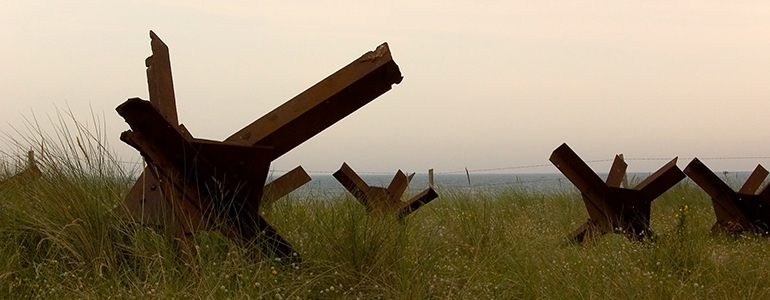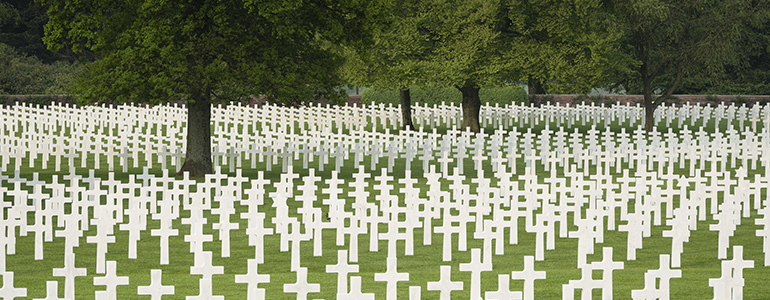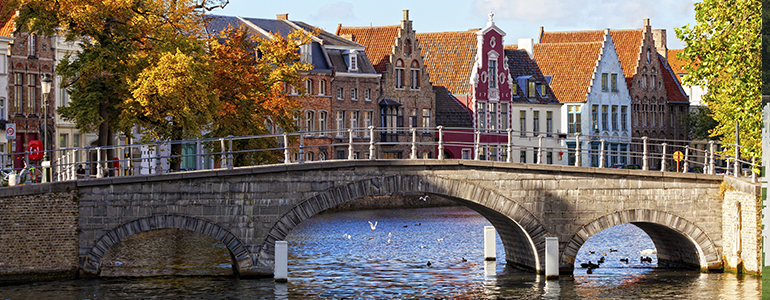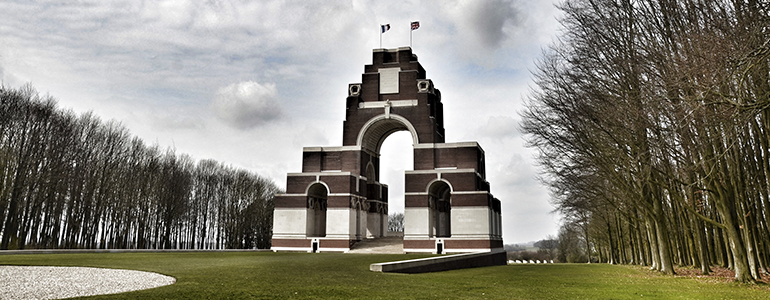
29 OCT 2014 - BY JOSEPH TYSON
These two epic and tragic confrontations took place over vast swathes of the mainland continent, leaving behind sombre reminders of war, both physical and spiritual.
With Remembrance Day coming up, we thought it only apt to take a look at some of the battlefields in Europe where so many lost their lives in the heat of war.
Germany, France, Belgium and Holland all hosted some of the most iconic clashes and today these sites are still visited by thousands for historical tourism, educational trips or simply as a sign of respect.
Not only was the Invasion of Normandy the biggest amphibious operation in history but it was also a huge turning point in WWII.
Led by UK, US, Canadian and French troops, the allied nations courageously fought their way up these famous beaches in order to secure a vital victory against Hitler’s Germany.
Today, Normandy’s beaches are still referred to by their operational code names on maps and the area is an important destination for historical tourism.
Relics from the war are still visible on the beach with the large blocks that formed part of the Mulberry Harbours still stranded in the sand. Further up the beach, you can see the perfectly preserved gun battlements that made up the formidable German defence line.
The area is also home to a number of sombre graveyards that remember the fallen. Visit the American cemetery in Colleville-sur-Mer and La Cambe German war cemetery and reflect upon those who gave their all for their country.

After the allied successes of Normandy, Hitler was desperate to recapture Antwerp, a port of huge strategic significance, and secure his position on the Western Front.
Taking the allied nations by surprise, he and his commanders launched a fierce counter-attack through the forests of the Ardennes, causing massive casualties to the Americans but also depleting German war resources.
Nearby town Bastogne, which played a big part in the battle, is home to a museum where a 3D account of events can be viewed.
The events of Bastogne were famously portrayed in Steven Spielberg's epic war series Band of Brother and you can find out more about this brave battalion of paratroopers and the obstacles they faced at the museum.
There are also various tours around the region for those looking to visit specific battle sites and bases in the Ardennes.

The battles that took place in Belgian Flanders mainly happened around the village of Ypres where fighting was prevalent from 1914 until 1918 (towards the end of WWI).
This area played a significant role in stopping the German army’s advance towards the channel ports of Calais and Dunkirk, which would have given the Kaiser a huge strategic advantage and could have swayed the war in his favour.
Today, this scene is remarkably different to what it would have been come the end of the Great War.The town of Ypres and the region around it has developed since the cease of fighting, making it a pleasant place to visit.
This ancient, walled city is a great place to explore in itself, with great links to the surrounding battlefields and war memorials.

Perhaps one of the most famous battlefields from WWI, the Somme saw three major clashes unfold in its presence during the Great War.
The Battle of the Somme, the German Spring Offensive and the Allied Advance to Victory all took place between 1916 and 1918, each one contributing significantly to the outcome of the war.
Due to the importance of this part of the Western Front, there are many tours that operate in the region, taking in the magnitude of the Somme battlefields.
Some sites of conflict have been preserved for tourism, while there are also numerous museums and memorials in the area that reflect the scale of loss of life that occurred here.
